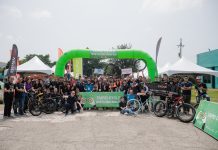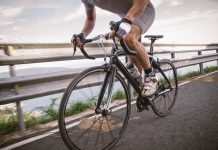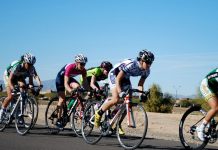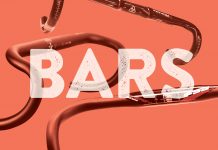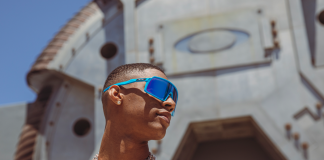THE PEDAL ASSEMBLY
Your pedals have the most work to do among the other two points of contact—saddle and handlebar—between you and your bike. Look knows this too well as the top leader in clipless pedal systems. It was Look that first came up with the three-point fastening mechanism, which has become the standard for road pedals.
The giant Look logo display inside the factory that is made of rows and rows of pedals serves as a perfect backdrop to their staff, all busy and focused cooking up some genius work.

The Keo Power Lab cannot be mistaken on the side. Looking at the setup, any cycling geek would come close to a panic attack at the sight of all the pedalcraft the house holds. While frames are made in Tunisia, every Look pedal is made in Nevers with 100% French parts. Audrey told us that about one million pedals are produced each year in this factory.
Look’s Keo Power pedal, which was developed in collaboration with Polar, is a result of such engineering prowess. These power-meter pedals that come with transmitter pods, providing left/right balance information, helps riders in building power measurement into the pedal.
The precision work that goes into the making of these pedals requires a sophisticated assembly. These internals can be easily contaminated, so they are assembled inside a sealed chamber, only correctly attired personnel can go in.
THE TESTING LAB
While we didn’t get to see much frame finishing in action, as almost everyone was on their lunch breaks, an interesting procedure was taken place—an impeccable bike frame was undergoing some precision drilling. Enter the right specifications and the ‘transformer’ produces your frame with accurately drilled and positioned holes.

After this, we stepped into their QC department and testing laboratories where products get tested for durability. We were quick to notice a cylindrical test chamber.
Bike products were put inside there to test against corrosive elements, primarily salt. Never mind the sweat when you’re riding, that’s taken care of long before your bike gets to you.
Then, there’s your pedal axle being put on trial. Testing load was applied to withstand a certain weight. This fatiguing of the component was required to ensure durability against real world usage.
This was followed by a quick look at the head tube and rear axle testing. We saw a frame undergoing some stiffness and deflection test. After a certain amount of stress was applied, results would show which points of the product were weak.
Next was the bottom bracket testing. The frame was held in place and force was applied on certain points. The stiffness of the frame must be greater, otherwise it failed the test.

No wonder even the Chinese National Team riders, hailing from the country where some of the largest production bases for carbon bikes are found, are using Look’s track bicycles. Indeed, it takes a great machine to make a great scene in the Olympic stage—LOOK nowhere else.

















